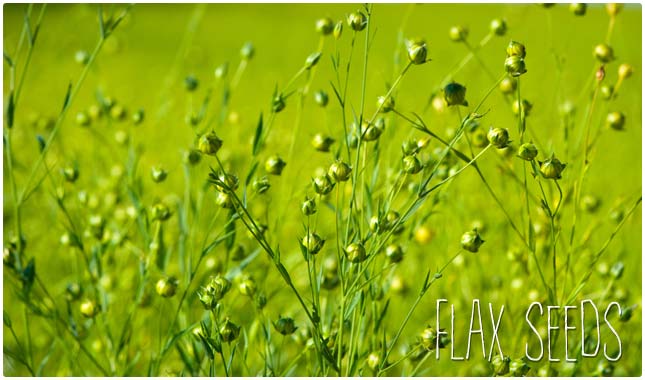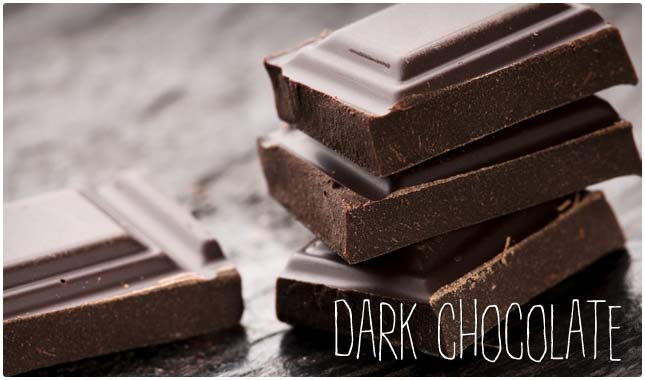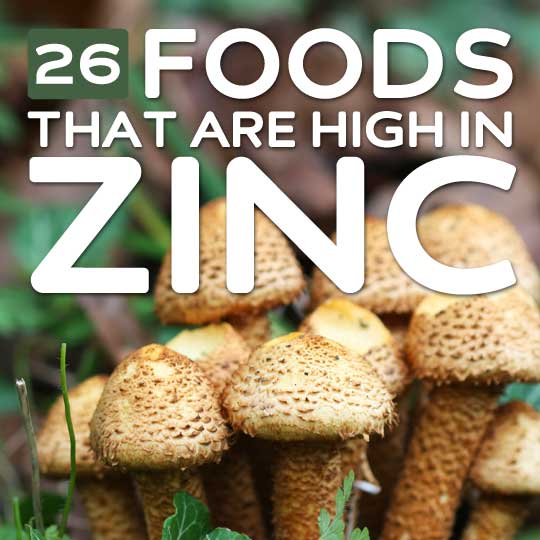[hr]
[table id=2 /]
Zinc is an important mineral for the body, and a deficiency can result in hair loss and diarrhea. The National Institute of Health says that the average adult male should be getting 11 milligrams of zinc each day, and adult females need 8 milligrams daily. It’s important to keep in mind that this is cumulative throughout the day, so you shouldn’t try to meet that requirement in one sitting, or with one food. The list of foods below will help give you an idea of how you can incorporate different foods into your diet that will help you meet your zinc needs.
Why do we need zinc in the body?
Although minerals are not needed in amounts that are as high as vitamins, they still play an important role in keeping you healthy. Zinc is a mineral that is needed in every cell in your body. It’s especially helpful for keeping your immune system healthy and properly functioning by fighting off bacteria and viruses that make you sick. Zinc is also needed for the production of DNA and protein. It plays an important role in the proper development and growth of infants. Lastly, zinc is needed to help heal wounds and keep your sense of taste and smell working at their best.
Research shows that zinc may be able to help you get through the common cold. According to one study, taking at least 75 mg of zinc within 24 hours of the onset of a cold reduces the symptoms of the cold in healthy people. Another study found that taking zinc lozenges reduced the duration of the common cold by 33 percent. One study even found that supplementing with zinc can help increase free testosterone in the body, which plays an important role in men’s health. Even women need to make sure they maintain their testosterone levels to keep their strength up.
How much zinc do I need?
Your zinc needs vary depending on your age and gender. Research shows that the following chart should be used as a guideline for zinc intake:
[table id=3 /]
How do I know if I am getting enough zinc?
Zinc is found in many foods that people in the United States commonly eat, such as beans, nuts, breakfast cereals, dairy products, meats, and grains. For this reason, it’s unlikely that most people have a zinc deficiency.
Not getting enough zinc may contribute to slow growth in children and infants. It can also lead to delayed sexual development in teens as well as sexual dysfunction in adult men. Other symptoms of zinc deficiency include loss of appetite, diarrhea, skin or eye sores, and hair loss. If you don’t get enough zinc, you may also experience weight loss, trouble healing wounds, a reduced level of alertness, and problems tasting food.
Keep in mind that some of these symptoms can be due to conditions other than a zinc deficiency, so it’s always best to contact your doctor to check your zinc levels if you think you’re not getting enough. People who are at an increased risk of developing a zinc deficiency include those with a gastrointestinal disorder, such as Crohn’s disease or ulcerative colitis. This is because digestive disorders can impact the amount of zinc (as well as other nutrients) that you absorb in your small intestine.
Vegetarians or people who do not eat a lot of meat are also at an increased risk of developing a zinc deficiency. This can be managed by incorporating more beans and grains in your diet. It’s also worth considering adding some superfoods to your diet. Drinking too much alcohol can also affect the body’s ability to absorb zinc.
What are the benefits of zinc on the body?
As mentioned above, zinc is needed in every cell of your body. This means that your cells and your body could not function without it. Specifically, zinc is needed to fuel the activity of over 100 different enzymes, which are messengers that carry out chemical reactions within the body. Zinc also boosts your immune system by activating T lymphocytes cells, which are needed to attack dangerous or cancerous cells in the body. Some research even shows that zinc plays a role in how neurons communicate with each other, which affects our memories and how we learn new things.
One study found that zinc was beneficial for treating diarrhea. Researchers of the study indicated that taking a zinc pill for ten days effectively treated the condition and reduced the risk of future outbreaks from reoccurring. Topical zinc can be used to help treat wounds. This is because zinc plays a role in maintaining skin’s structure. One study found that topical applications of zinc to the skin promote wound healing by decreasing inflammation and bacterial growth. Additional research supports using zinc to also help treat acne through reduction of bacteria growth and inflammation.

1. Spinach
Spinach may not be the food with the most zinc in it, but it holds its own considering that it’s a plant source. It’s just one of the many vitamins and minerals that spinach is known for, and one more reason to eat it more often. Having a salad with spinach as the base is an easy way to start getting more zinc into your diet, especially when you top that salad with other foods that contain zinc. One cup of cooked spinach contains 1.37 mg of zinc, which is about 12 percent of your daily recommended value.
[hr]
2. Beef
Beef is a great way to increase your zinc levels because it contains so much of it in a very little serving. Some other foods on this list may have more zinc, but it’s unlikely that you would eat very much of that food in one sitting, like pumpkin seeds. Research shows that a three-ounce serving of braised chuck roast beef contains seven mg of zinc, which is 47 percent of your daily recommended intake.
3. Shrimp
Shrimp serves as a good food for zinc intake, and also provides other benefits like being a high quality protein, and being low in calories. They are also a surprising source of antioxidants. Usually, it’s fruits and vegetables that get mentioned in a discussion of antioxidants, but shrimp have a pretty good sized dose of an antioxidant called astaxanthin that helps fight inflammation in the body, which can provide relief to anyone suffering from an inflammatory condition. Four ounces of shrimp contains 1.85 mg of zinc, which is about 17 percent of your daily recommended intake.
4. Kidney beans
Kidney beans are a great plant-based source of zinc, which is good news for vegans and vegetarians looking to get their zinc requirements met. These beans are also helpful in maintaining healthy blood glucose levels, providing long-lasting energy, and keeping you feeling full for long periods without a subsequent crash. They can be eaten as a side dish by themselves or added to any entree to boost fiber intake and add additional protein. A one-half cup serving of cooked kidney beans contains 0.9 mg of zinc, or 6 percent of your daily recommended intake.
[hr]

5. Flax Seeds
Flax seeds get a lot of attention because of their omega-3 and fiber content, but they are also a good source of zinc. Keep in mind that this is one food that you won’t be eating a mouthful at a time, but it can be used as part of a zinc-conscious eating plan to get your total numbers up. They can be sprinkled on just about anything for added nutrition. Try pouring some into soups and smoothies and you won’t even know it’s there. A one-half cup serving of whole flaxseeds contains 3.65 mg of zinc, or 24.5 percent of your daily recommended value.
[hr]
6. Pumpkin Seeds
Chances are you’re not eating enough pumpkin seeds. If you save these as an annual October treat only, then it’s time to start getting them into your system throughout the year. They’re not only remarkably high in zinc, but they provide other benefits to the body like vitamin E, omega-3s, and keeping your blood sugar levels looking good. They also help reduce inflammation, thanks to their high antioxidant properties. A one-quarter cup serving of pumpkin seeds contains 2.52 mg of zinc, or 23 percent of your daily recommended intake.
7. Oysters
A three-ounce serving size of cooked oysters contains a whopping 74 mg of zinc, which is about 493 percent of your daily recommended intake. So you could eat oysters once a week or so in addition to other foods on this list to make sure you’re getting your zinc needs covered without worrying about taking a supplement.
8. Watermelon seeds
Here’s a seed that often gets spit out, and many times doesn’t even show up because the watermelon is seedless. But if you dry watermelon seeds, and even toast them, they can be a wonderful source of zinc, as well as other good things for the body, like protein, magnesium, healthy fats, and a host of B vitamins. This makes them a great snack to consider, since most of us are not in the habit of eating them. You’ll get 10 mg of zinc for every 100 gram serving of watermelon seeds.
[hr]

9. Garlic
Garlic has a long list of health benefits, not the least of which is that it provides a respectable amount of zinc. Granted, it’s not going to be able to take a big chunk out of your zinc requirements for the day when used in cooking, but it can contribute and add to the day’s total. Garlic also has cleansing properties, and has long been linked to anti-cancer effects and a healthier heart. One ounce of garlic contains 0.3 mg of zinc, or two percent of your daily needs. That’s not a lot, but it adds up if you eat garlic every day!
[hr]
10. Lima Beans
Mom says to eat your lima beans! Turns out she was onto something, and lima beans put up pretty good numbers in the zinc column. Remember not to go overboard with any one food, and shoot for a variety of different foods to meet your needs. Lima beans help the body in a number of ways including adding more fiber, protein, folate, iron and magnesium to your diet. A one-cup serving of lima beans contains 1.79 mg of zinc or 16 percent of your daily recommended value.
11. Peanuts
Peanuts can be used as a snack to hold you over between meals, and they also provide plenty of zinc to help the cause. Consider eating peanut butter if you don’t like the crunchiness of whole peanuts. If you buy an organic variety the only ingredient should be organic peanuts, and therefore it’s just like eating it in whole form, but you don’t have the crunch unless you buy the crunchy version. One ounce of peanuts contains 1 mg of zinc or 7 percent of the daily recommended intake.
12. Egg Yolks
The yolks of eggs specifically are a good source of zinc. The whites, not so much, which is why you’re missing out on a lot if you only opt for egg whites. Egg yolks contain all of the vitamins that are in an egg as well, so by eating the yolk you may be getting more fat but you’re also getting vitamins A, E, D and K, as well as additional amounts of minerals, which more than make up for any potential drawbacks. A one-cup serving of egg yolks contains 5.6 mg of zinc or 37 percent of your daily recommended intake.
[hr]

13. Turkey
Turkey doesn’t show up quite as much as chicken and is typically reserved for sandwiches throughout the year, and in whole form during the holiday. But no matter how you consume it, or how often, it’s going to provide you with a good zinc dose without piling on the fat and calories. Opt for roasted turkey breast and avoid the extra sodium and nitrates that cold cuts contain. A four-ounce serving of turkey contains 1.95 mg of zinc, or 18 percent of your daily recommended value.
[hr]
14. Salmon
Salmon often ranks on lists of the healthiest foods you can eat, and for good reason. It’s high in omega-3s and is an excellent source of protein, which is why it can help out dieters across a wide range of different diet strategies. It may not be a zinc powerhouse like some of the other foods listed here, but it can serve to help add to your total daily intake, which is the overall goal. Four ounces of wild Coho salmon contains 0.64 mg of zinc or six percent of your daily recommended intake.
15. Lobster
Lobster may only get eaten on special occasions because of its priciness, but when you do eat it you’re getting a big boost of zinc without a lot of calories being added to the bottom line. Of course, lobster often gets dunked in melted butter, but that butter should be clarified making it ghee, a healthier form of butter that is free of the impurities that ordinary butter contains. Three ounces of cooked lobster contains 3.4 mg of zinc or 23 percent of your daily recommended intake.
16. Pork
A three ounce serving of pork chop contains 2.9 mg of zinc or 19 percent of your daily recommended intake. Look for pork that is organic and raised without the use of antibiotcs or hormones to avoided exposure to added chemicals.
[hr]

17. Dark Chocolate
As if you needed any additional reasons to eat chocolate, here’s one more. You’re getting quite a bit of zinc in chocolate, and if you keep it raw, you’re also getting a good source of antioxidants. Research shows that a 100 gram serving of unsweetened dark chocolate contains as much as 9.6 mg of zinc while cocoa powder has 6.8 mg.
[hr]
18. Chickpeas
These might also be labeled garbanzo beans in the store, but it’s still the same thing. These are what is used in hummus, and is pretty much a staple in vegetarian cuisine because of its many healthy properties. Zinc would have to be one of them. You’re getting a good amount of it here, while keeping your calories down, and getting extra fiber, as well as protein. It’s a very well-rounded food that can help you feel full and give you additional vitamins and minerals. A one-half cup serving of cooked chickpeas contains 1.3 mg of zinc or nine percent of the daily recommended value.
19. Beef Liver
Beef liver gets it’s own spot on our list because it is so different than ordinary beef. It ranks higher in several categories than beef does, including having slightly higher levels of zinc. But it doesn’t stop there. It outdoes beef as well as a many foods typically thought of as being healthy in many things like potassium, magnesium, vitamin A and vitamin B-12. It may be harder to find than ordinary beef, but it’s worth seeking out. A 100-gram serving of beef liver contains 4.25 mg of zinc or 38 percent of the recommended daily intake.
20. Brown Rice
Brown rice is always a good substitute for white rice, because it has a lower Glycemic Index score, has more potassium, more magnesium, more selenium, and fewer carbohydrates. We’ve seen higher zinc counts in other foods, but the likelihood of eating a 100 gram serving of brown rice is pretty doable. That’s why it makes a great side to any meat dish, and can also be incorporated into thousands of recipes in place of white rice. A one-cup serving of brown rice contains 1.21 mg of zinc or 15 percent of the daily recommended intake.
[hr]

21. Peas
Peas are one of those quintessential side dishes, and it’s pretty clear why. They taste good and provide a wide range of benefits like staving off cancer, providing energy, helping with anti-aging, and helping to regulate blood glucose levels. Turns out they’re also not too shabby in zinc content, and while they don’t provide a big chunk they can serve as a top contributor along with other foods found on this page. A one-half cup serving of cooked frozen peas contains 0.5 mg of zinc or three percent of the daily recommended intake.
[hr]
22. Sesame Seeds
If the only time you think about sesame seeds is when they’re on a sesame seed bun, it’s time to re-introduce yourself to them. They’re packed with zinc, and while you likely won’t be eating large quantities of them, they can basically be sprinkled on just about any dish to add instant nutrition. Not only are they high in zinc, but they’re loaded with healthy polyunsaturated and monounsaturated fats. Those are the good fats that your body needs in order to keep your heart healthy. A one-quarter cup serving of sesame seeds contains 2.79 mg of zinc or 25 percent of the daily recommended value.
23. Lamb
Lamb often gets overlooked on the meat scene because of its higher fat content, but in some countries around the world it is just as popular as beef. The zinc it contains is reason enough to start adding it to your menu rotation, and you can opt for cuts of lamb that are a bit leaner than others. Ask your butcher for lean cuts, or simply pick out ones that have less visible fat at the store. And also choose organic, grass-fed, and antibiotic free. Four ounces of grass-fed lamb contains 3.87 mg of zinc or 35 percent of the daily recommended intake.
24. Cashews
These healthy nuts are sometimes avoided because of their high fat content. But much of their fat content is monounsaturated, a healthy fat. The zinc content in cashews is another reason to use this as a healthy snack that can tide you over between meals, or be used in a recipe to enhance flavor, replace dairy products in a vegan recipe, or add a bit of buttery crunchiness. A one-ounce serving of dry roasted cashews contains 1.6 mg of zinc or 11 percent of the daily recommended value.
[hr]

25. Crab
If love to eat crab legs, there’s good news. It’s relatively high in zinc and can help you meet your daily needs in this area. Crab is also a good source of protein, and doesn’t weigh you down with a lot of calories. It’s very low in fat, but you’ll want to watch out for the sodium levels, which can run rather high, leading to water retention and an increase in blood pressure. Three ounces of cooked Alaskan king crab contains 6.5 mg of zinc or 43 percent of the daily recommended value.
[hr]
26. Mushrooms
Regardless of which mushrooms you go with, there will likely be a good amount of zinc in them. Mushrooms are a great add-on to any meal, and they can flavor up a pizza or simply be cooked up and eaten as a side dish. They have a healthy assortment of vitamins and minerals, and several types of mushrooms have been shown to have anti-cancer benefits. A one-half cup serving of shiitake mushrooms contains 0.96 mg of zinc or nine percent of the daily recommended value while a one-cup serving of crimini mushrooms has 0.79 mg of zinc or seven percent of the daily recommended intake.
[hr]
As you can see, it’s relatively easy to get enough zinc, and perhaps you already eat some of these foods on a regular basis. Being deficient in zinc for long periods of time can yield serious health concerns, so it’s best to visit your doctor and get tested to see where you fall on your zinc levels, as well as all of the other important vitamins and minerals. They’ll be able to identify what you need more of, and can consult with you further on the best way to get more of what you need.




